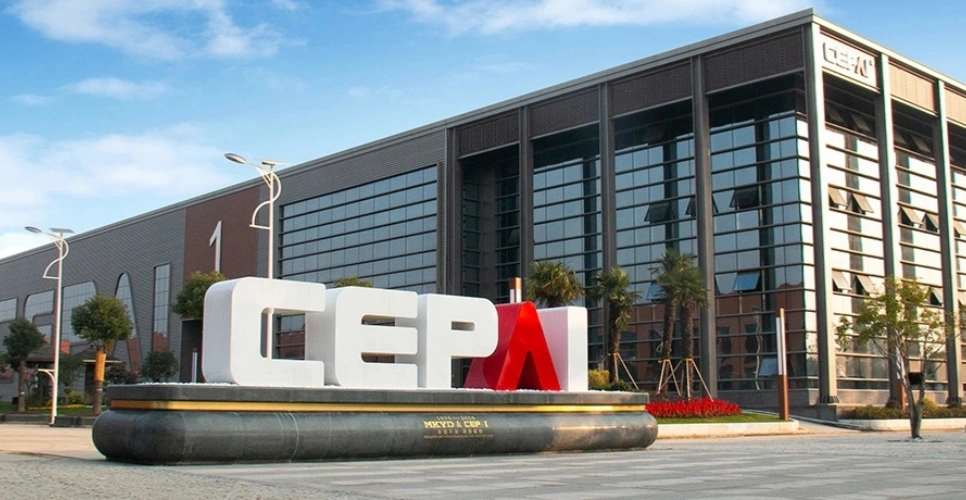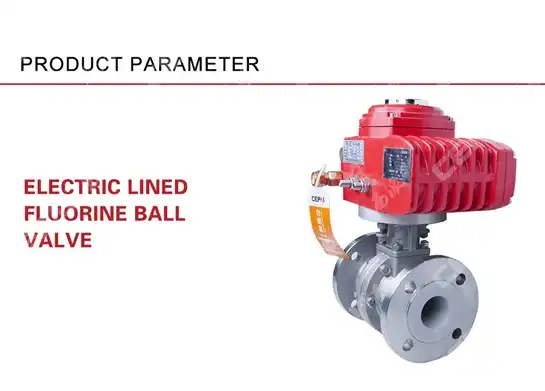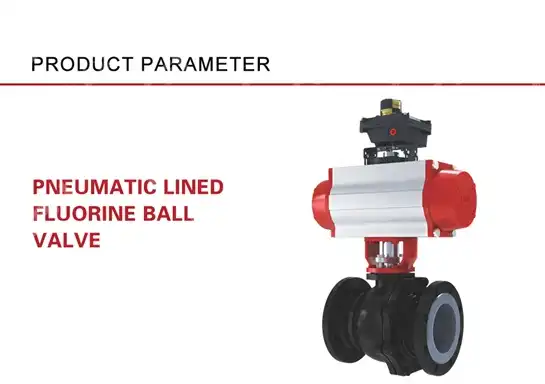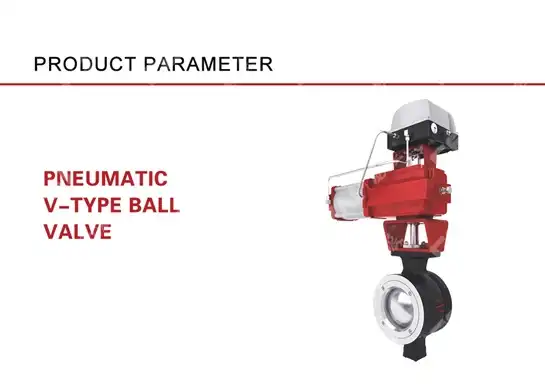How to Select a Cast Steel Pneumatic V-Shaped Ball Valve for Flow Control?
Selecting the right Cast Steel Pneumatic V-Shaped Ball Valve can prevent costly production downtime and inefficient flow control in industrial applications. When your process demands precise throttling capabilities combined with bubble-tight shutoff performance, yet conventional globe valves fall short due to high pressure drops and maintenance requirements, understanding the selection criteria for Cast Steel Pneumatic V-Shaped Ball Valves becomes critical. This comprehensive guide addresses the technical specifications, material considerations, actuator compatibility, and performance parameters necessary for optimal valve selection in demanding flow control applications across petrochemical, oil and gas, and power generation industries.

Understanding Cast Steel Pneumatic V-Shaped Ball Valve Design Principles
The Cast Steel Pneumatic V-Shaped Ball Valve represents an advanced solution for precise flow control applications where traditional control valves struggle to deliver both accurate modulation and reliable shutoff. The fundamental design principle centers on a specially contoured V-notch ball that rotates within the valve body, creating a variable flow area that enables linear flow characteristics throughout the operating range. Unlike conventional quarter-turn ball valves with full-bore openings designed solely for on-off service, the V-shaped configuration in these Cast Steel Pneumatic V-Shaped Ball Valves provides exceptional throttling capabilities. The cast steel construction offers superior mechanical strength and durability compared to fabricated bodies, making these valves particularly suitable for high-pressure applications up to ANSI Class 2500 and temperatures ranging from cryogenic service to elevated conditions. The pneumatic actuation system integrated with these Cast Steel Pneumatic V-Shaped Ball Valves delivers rapid response times, fail-safe positioning through spring-return mechanisms, and compatibility with modern process control systems through electro-pneumatic positioners.
-
Material Selection for Cast Steel Bodies
When specifying a Cast Steel Pneumatic V-Shaped Ball Valve, understanding the metallurgical properties of various cast steel grades is paramount to ensuring long-term reliability and preventing premature failure. Carbon steel castings such as ASTM A216 WCB remain the workhorse material for general-purpose applications with non-corrosive fluids at temperatures between -29°C to 425°C, offering excellent mechanical properties at economical cost. For services involving corrosive media, elevated temperatures, or cryogenic conditions, alloy steel castings including WC6 (1.25Cr-0.5Mo) and WC9 (2.25Cr-1Mo) provide enhanced corrosion resistance and improved high-temperature strength retention. The cast steel construction of these Cast Steel Pneumatic V-Shaped Ball Valves inherently provides superior structural integrity compared to welded fabrications, as the monolithic body eliminates potential weld defects and stress concentrations. Material traceability becomes critical in safety-critical applications, requiring documentation of heat treatment procedures, mechanical testing results including tensile strength and impact toughness at operating temperature, and positive material identification through spectroscopic analysis. CEPAI Group's investment in advanced testing equipment ensures that every Cast Steel Pneumatic V-Shaped Ball Valve meets stringent material specifications with comprehensive quality documentation.
-
V-Port Geometry and Flow Characteristics
The distinctive V-shaped port geometry distinguishes these Cast Steel Pneumatic V-Shaped Ball Valves from conventional spherical ball valves, providing substantially different flow characteristics optimized for control applications. The V-notch profile creates a characterized flow path where the flow coefficient (Cv) increases progressively with valve rotation, typically achieving linear or equal percentage flow characteristics depending on the specific V-notch angle and profile design. This contrasts sharply with standard ball valves that exhibit quick-opening characteristics with minimal throttling capability. When sizing a Cast Steel Pneumatic V-Shaped Ball Valve, engineers should ensure the calculated Cv for both minimum and maximum flow conditions falls between 20% to 80% of the valve's port opening range, maximizing controllability while avoiding operation at extreme travel positions where control precision degrades. The V-port design also minimizes cavitation and flashing risks by distributing pressure reduction gradually across the valve trim rather than creating a single high-velocity jet. Understanding rangeability—the ratio between maximum and minimum controllable flow—becomes essential, as quality Cast Steel Pneumatic V-Shaped Ball Valves typically achieve rangeability exceeding 100:1, far superior to the 50:1 common in conventional globe valves.
Critical Selection Parameters for Optimal Performance
Proper selection of a Cast Steel Pneumatic V-Shaped Ball Valve demands comprehensive analysis of multiple interrelated parameters that collectively determine whether the valve will perform reliably throughout its service life. Process engineers must systematically evaluate fluid properties, operating conditions, control requirements, and installation constraints to specify the optimal valve configuration. The selection methodology should begin with establishing design basis data including fluid composition, density, viscosity, vapor pressure, and operating pressure-temperature envelope. These fundamental parameters directly influence material compatibility, pressure class requirements, trim design, and actuation torque calculations. Failure to adequately account for any critical parameter during the selection process can result in operational problems ranging from inadequate control precision to catastrophic valve failure. CEPAI Group's pre-sales technical consultation service assists customers in navigating this complex selection process, leveraging decades of application experience across diverse industries to recommend Cast Steel Pneumatic V-Shaped Ball Valve configurations optimized for specific service conditions.
-
Pressure and Temperature Rating Considerations
Determining appropriate pressure and temperature ratings represents perhaps the most fundamental aspect of Cast Steel Pneumatic V-Shaped Ball Valve selection, as these parameters establish the mechanical design basis for the entire valve assembly. The pressure-temperature rating must accommodate not only normal operating conditions but also potential upset scenarios including pressure surges, thermal expansion, and system overpressure protection device activation. Cast steel valves are available in ASME B16.34 pressure classes ranging from 150# through 2500#, with each class defining maximum allowable working pressure at specific temperatures. It's critical to recognize that allowable pressure decreases as temperature increases due to reduced material strength at elevated temperatures, necessitating careful evaluation of the complete operating envelope. For Cast Steel Pneumatic V-Shaped Ball Valves in WCB construction, the pressure-temperature rating at 38°C (100°F) establishes the baseline, with pressure ratings declining progressively to approximately 50% of the baseline value at 425°C (800°F). Additionally, the differential pressure across the valve during throttling service generates substantial dynamic forces on the ball and stem, requiring verification that the selected Cast Steel Pneumatic V-Shaped Ball Valve can withstand these loads without excessive deflection or accelerated wear.
-
Flow Coefficient Sizing and Rangeability
Accurate flow coefficient (Cv) sizing stands as the cornerstone of proper Cast Steel Pneumatic V-Shaped Ball Valve selection, directly determining whether the valve can deliver the required flow range with acceptable control precision. The Cv represents the flow of water in gallons per minute at 60°F that produces a one-psi pressure drop across the valve, providing a standardized metric for comparing different valve sizes and types. For Cast Steel Pneumatic V-Shaped Ball Valves, the effective Cv varies with valve position due to the characterized port geometry, typically following a linear or equal percentage relationship. Engineers must calculate the required Cv at both maximum and minimum flow conditions using the fundamental flow equation that accounts for fluid properties, upstream and downstream pressures, and allowable pressure drop. The selected valve size should position these operating points within the valve's optimal control range, typically between 20-80% open, ensuring adequate rangeability while avoiding operation at extreme positions where control becomes erratic. Modern Cast Steel Pneumatic V-Shaped Ball Valves from CEPAI Group feature precision-machined V-notch profiles that deliver predictable, repeatable flow characteristics with rangeability exceeding 100:1, enabling single-valve solutions for applications that would traditionally require multiple valves or complex bypass arrangements.
-
Actuator Selection and Sizing Requirements
Proper pneumatic actuator selection for Cast Steel Pneumatic V-Shaped Ball Valves requires detailed analysis of torque requirements, response time specifications, and fail-safe positioning needs to ensure reliable operation throughout the control range. The operating torque comprises three components: breakaway torque to overcome static friction and unseating forces, dynamic torque to rotate the ball against fluid forces and packing friction, and seating torque to achieve bubble-tight shutoff. These torque values vary significantly with valve position, differential pressure, and seat design, requiring comprehensive torque profiles rather than single-point calculations. Pneumatic actuators must provide sufficient torque margin—typically 1.25 to 1.5 times the maximum calculated torque—to account for friction increases due to packing wear, process contamination, and reduced air supply pressure. For critical applications, spring-return actuators enable fail-safe positioning of the Cast Steel Pneumatic V-Shaped Ball Valve to either fail-open or fail-closed position upon loss of air supply, with spring sizing based on the worst-case torque condition. The actuator mounting interface must comply with ISO 5211 standards to ensure proper alignment and torque transfer between actuator and valve stem, preventing premature wear and maintenance issues.

Seat and Seal Material Compatibility
The selection of appropriate seat and seal materials for Cast Steel Pneumatic V-Shaped Ball Valves critically impacts service life, leakage performance, and maintenance intervals, particularly in demanding chemical process applications. Seat materials must simultaneously provide resilient sealing for bubble-tight shutoff, adequate hardness to resist erosion and wear, chemical compatibility with process fluids, and thermal stability across the operating temperature range. PTFE (polytetrafluoroethylene) represents the most common seat material for Cast Steel Pneumatic V-Shaped Ball Valves due to its excellent chemical resistance, low friction coefficient, and broad temperature range from -200°C to 260°C, though higher temperatures require specialty grades like PFA or graphite-filled PTFE. For abrasive service or applications with solid particles, reinforced PTFE seats or metal-to-metal seating designs may be necessary, though these sacrifice some sealing performance. Secondary seals including O-rings and stem packing must also be specified based on chemical compatibility, with options ranging from elastomeric materials like Viton and EPDM for moderate conditions to high-performance materials like Kalrez or graphite for extreme service. CEPAI Group maintains extensive chemical compatibility databases and application experience to recommend optimal seat and seal materials for Cast Steel Pneumatic V-Shaped Ball Valves across diverse process conditions.
Installation, Maintenance, and Troubleshooting
Successful implementation of Cast Steel Pneumatic V-Shaped Ball Valves extends beyond proper selection to encompass correct installation practices, preventive maintenance programs, and systematic troubleshooting methodologies. Installation begins with verifying that pipeline alignment and support prevent stress loading on the valve body, as external forces can cause body distortion, seat leakage, and premature actuator failure. The valve should be installed with the stem in a vertical orientation when possible to prevent accumulation of process debris in the body cavity, and flow direction must match the valve marking unless bi-directional flow has been specifically verified. Pneumatic supply lines require proper sizing, filtration, and pressure regulation to ensure consistent actuator performance, with air quality meeting ISO 8573 standards for particle content, moisture, and oil contamination. Prior to commissioning, the Cast Steel Pneumatic V-Shaped Ball Valve should undergo functional testing including stroke timing verification, position calibration, and leak testing to confirm proper operation. Ongoing maintenance should follow manufacturer recommendations, typically including periodic inspection of packing adjustments, seat condition assessment, actuator air filter replacement, and positioner calibration verification. When troubleshooting operational issues, systematic evaluation of symptoms against known failure modes enables rapid diagnosis, with common problems including excessive leakage indicating seat wear or damage, sluggish response suggesting inadequate actuator torque or air supply issues, and control instability pointing to positioner calibration or mechanical friction problems.
Conclusion
Selecting the optimal Cast Steel Pneumatic V-Shaped Ball Valve requires comprehensive evaluation of design parameters, material specifications, and performance requirements to ensure reliable operation in demanding flow control applications. By systematically addressing pressure-temperature ratings, flow coefficient sizing, actuator compatibility, and material selection, engineers can specify valve solutions that deliver precise control, extended service life, and minimal maintenance requirements across diverse industrial processes.
Cooperate with CEPAI Group Co., LTD.
As a China Cast Steel Pneumatic V-Shaped Ball Valve factory with advanced manufacturing capabilities and comprehensive certifications including API, ISO, and CE standards, CEPAI Group Co., LTD. stands ready to support your flow control requirements. Our position as a leading China Cast Steel Pneumatic V-Shaped Ball Valve supplier is reinforced by investment of 156 million yuan in intelligent manufacturing systems, creating the Asia Pacific region's longest high-precision flexible production line. Working with our China Cast Steel Pneumatic V-Shaped Ball Valve manufacturer ensures access to products certified by PetroChina, Sinopec, and CNOOC, backed by CNAS-accredited testing and quality assurance. Whether you need China Cast Steel Pneumatic V-Shaped Ball Valve wholesale solutions or Cast Steel Pneumatic V-Shaped Ball Valve for sale in specific configurations, our technical team provides comprehensive pre-sales consultation and customization services. Our Cast Steel Pneumatic V-Shaped Ball Valve price reflects exceptional value combining High Quality Cast Steel Pneumatic V-Shaped Ball Valve construction with competitive pricing. Contact CEPAI Group Co., LTD. at cepai@cepai.com today to discuss your application requirements and receive expert valve selection guidance from our experienced engineering team.
References
1. Smith, P. and Zappe, R.W. "Valve Selection Handbook: Engineering Fundamentals for Selecting the Right Valve Design for Every Industrial Flow Application" - Gulf Professional Publishing
2. Lyons, J.L. and Askeland, F.R. "Piping Handbook: Flow Control and Instrumentation, Valve Technology and Performance Standards" - McGraw-Hill Professional
3. American Petroleum Institute "API Standard 6D: Specification for Pipeline and Piping Valves Including Ball, Check, Gate and Plug Valves" - API Publications
4. International Society of Automation "ANSI/ISA-75.01.01: Industrial-Process Control Valves, Part 2-1: Flow Capacity Sizing Equations for Fluid Flow Under Installed Conditions" - ISA Standards
_1746598563385.webp)
Get professional pre-sales technical consultation and valve selection services, customized solution services.

About CEPAI


